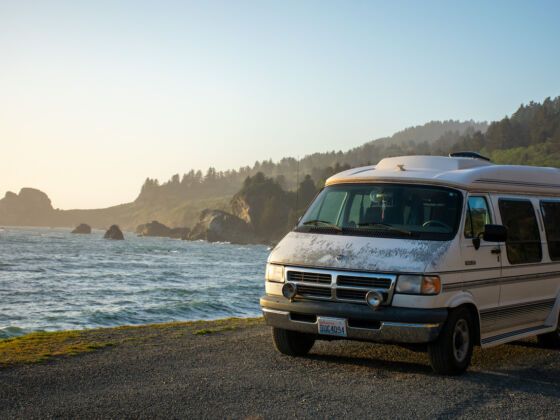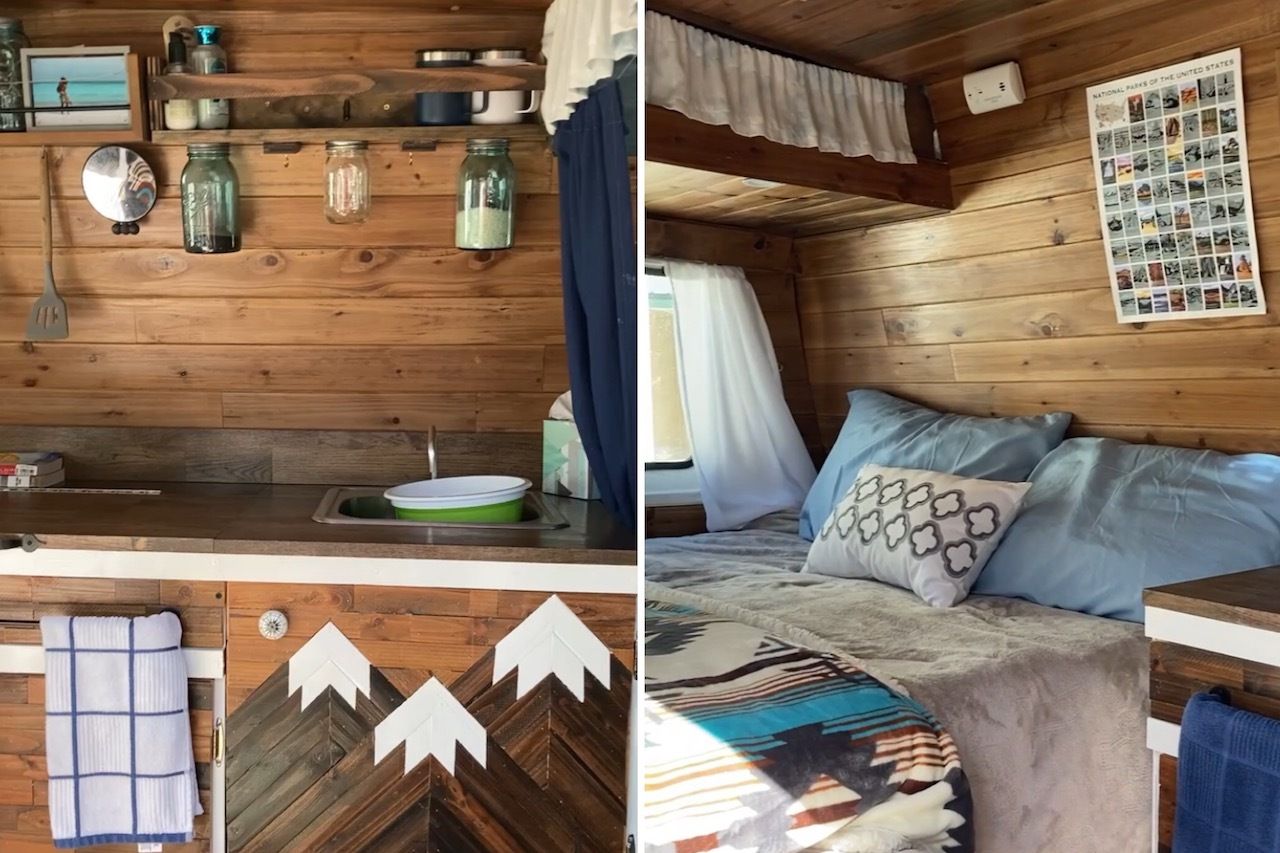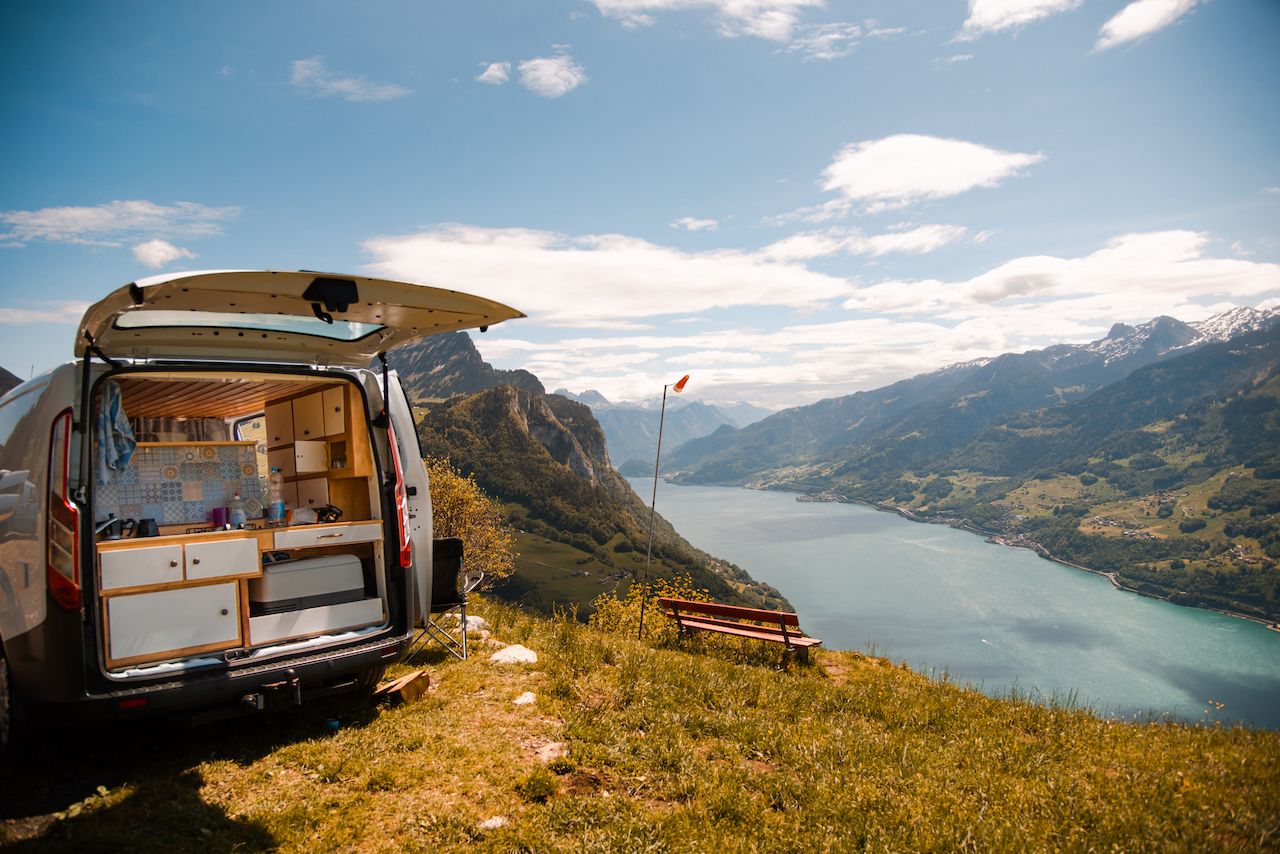The truth is, I never intended to live in a van. I was far more interested in exploring the far-flung corners of the globe than becoming a vagabond in my own backyard. But when the world of travel came to a screeching halt in the spring of 2020, I found myself in India and forced to return home with no job, no apartment, and no immediate means to remedy that situation.


What It Really Costs to Convert to the Vanlife, According to Someone Who Did It
Time, however, was a resource I had in abundance. Time to scroll past countless Instagram depictions of young couples van-camping against breathtaking backdrops. Time to browse Craigslist and Facebook Marketplace for cheap vans. And time to convert my newly acquired hunk of junk into a log cabin-esque masterpiece.
Although every single day on the road toggles between exhilarating freedom and frustration, choosing to trade in my backpack for my 1994 Dodge Ram Van has overall been a blessing. It has allowed me to explore the most remote corners of the US and try on a more minimalist nomadic lifestyle, which I’ve documented on my blog Beyond the Bucketlist and my Instagram.
Before I divulge my tips for hopeful van-lifers, let me just get one thing straight: Those Instagram accounts that depict living in a van as a luxurious lifestyle where you camp with spectacular views of snow-capped mountain tops and lush green valleys aren’t telling the whole truth. Unless you’re wealthy or able to make a sizable income on the road, your vanlife experience is going to be wildly unglamorous. Sleeping in Wal-Mart parking lots when you just couldn’t be bothered to uncover a scenic vista, for example, or getting the dreaded midnight knock that means it’s time to pick up and leave. Then there are times when you find yourself sneaking into grocery stores for a bathroom that’s not a hole you dug yourself. It’s not all sunshine and roses.
Fortunately, I grew up loving the great outdoors. Family vacations were spent in the wilderness far from the nearest campgrounds, and my early 20s were spent living out of a backpack in South and Asia. Like many nomads, I craved adventure and happily found that the benefits of living in a van far outweighed the drawbacks. Since then I’ve explored 25 national parks across 39 states and more than 20,000 miles in my trusty old van.
If you’re hoping to experience the United States on a budget, or trying out an alternate lifestyle for a few years, here are some tips to help get you on the road faster — and how much it’ll cost to do so.
How to pick the perfect van

Photo: Geena Truman
I’ve met many vanlifers with all different rigs. Some set out to explore the US with a bare-bones van that has a mattress on the floor and cooking equipment. Others in the tiny home movement spend thousands crafting the perfect van that they can build a life in. Whatever your budget or intentions, if vanlife interests you, use these helpful tips to get you started.
It’s crucial you find a reliable vehicle that can withstand some serious mileage if you plan on investing your time and money to convert it. Depending on your budget that could be a $20,000 Sprinter with ample headroom or a $4,000 musty high-top conversion van like mine. To decide what van is right for you, evaluate your deal breakers.
Do you need to be able to fully stand up? Do you plan on spending time on pot-holed backroads where 4WD and high clearance are required? Do you have the time or the tools to do the conversion yourself, or should you look for a pre-owned campervan? These are the basic questions you should address before you start searching for your dream van.
No matter what vehicle you feel best suits you, be sure to keep to these three rules in mind:
- Always have an independent mechanic evaluate the van before you purchase from a private seller.
- Avoid purchasing a vehicle with excessive rust because there is no fixing it.
- Be financially prepared to make repairs. If you’re considering the vanlife, be sure to keep an emergency fund of cash for unexpected breakdowns (because they will happen), and some money as a contingency plan in case you hate living in a van full-time.
The true costs of converting to the vanlife

Photo: Geena Truman
In total, I spent about $3,000 on the entire conversion process. I gutted the musty carpet and stripped the walls down to the metal, and then rebuilt from scratch. You could spend a ton more if you wanted to invest in a composting toilet, outdoor awnings, or any number of luxuries that make life on the road a little easier. Or you could opt for a life of extreme minimalism and spend a lot less. But this is the list of items that I deemed as must-haves for comfortable van-dwelling.
Overhead vent fan. A tricky installation, but essential if you want to prevent mold and cook inside your vehicle. Cost: $175
Sixty AMP Auxiliary Batteries. Two of these power my electrical system. I chose this option because it was far cheaper than solar power and charged while I drove. You should calculate your own energy needs before you decide on the size of battery. Cost: $120
Six-inch memory foam mattress. My bed is phenomenally comfortable. It sits atop my hand-crafted, U-shaped storage benches and table, and the area can easily convert into a daytime space. Cost: $100
Camping Shower Bag (Solar Heated). Cost: $15
Marine foot-pump water system. This allows me to wash dishes in my sink with ease. Cost: $75
Coleman Propane Two-Burner Grill. I designed a compartment in my kitchen cabinets so that the grill can be stored when not in use. Cost: $40
Reflectix Window Covers. Along with added privacy, these keep the van cool during the sweltering summer days and help, along with the insulation I installed during the build, to keep the van warm on frigid nights. Cost: $15
Ample Storage Space. Whether that’s in the form of roof racks, cabinets, overhead compartments, or shelves, you’ll need to store all your clothing, food, and everything else somewhere. Cost: Depends on your needs and what’s already built in
How to score those epic camping spots (and find free places to stay)

Photo: RoMiEg/Shutterstock
Once you’re road-ready, your biggest question will be how to find those elusive scenic van camping spots. Many you’ll stumble upon, and although they won’t often be “legal” in the strictest terms, stealth camping offers some of the most unique and spectacular views. You can also utilize helpful apps like the Dyrt or iOverlander to locate free and paid sites with amenities like showers or water refills.
If you’re choosing your spot yourself, there are a few important things to consider before you park:
1. Is it safe?
If you park in a city, try to find a semi-well-lit area. Along a highway pullout, be sure that you’re parked far enough from the roadway to evade erratic nighttime drivers and always sleep with your head farthest from the road.
2. Are you allowed to park here or are you going to get the midnight knock?
There’s nothing worse than settling in for bed and waking an hour later, groggy and confused, to an officer knocking at your window. If you don’t master the art of stealth camping, this will happen to you often.
3. Is it scenic?
My favorite vanlife memories have not been made in parking lots. It’s been sipping my warm mug of coffee looking out on the Lamar Valley of Yellowstone National Park. Or nestled up to the ocean, parked just out of reach of high tide, on Florida’s Gulf Coast. Or finding a slice of land managed by the Bureau of Land Management near the North Cascades that has stunning views of Mount Baker in the distance. Remote, scenic, and free — these campsites all left me feeling immersed in nature.